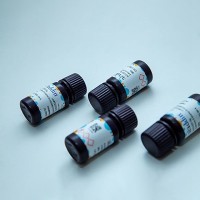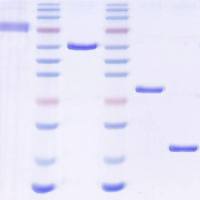RT-PCR in Diagnosis and Disease Monitoring of Acute Promyelocytic Leukemia (APL)
Acute promyelocytic leukemia (APL) is one of the most common subtypes of acute myeloid leukemia (AML), accountmg for 10–15% of de novo cases and typically presenting in early middle age (1 ). The disease is characterized by a potentially devastating coagulopathy that can lead to rapid demise, particularly owing to cerebral hemorrhage (1 ), a balanced chromosomal translocation, t(15;17), that is present in virtually all cases of morphological APL (2 –5 ) and a unique treatment response to retinoids (6 –9 ). Development of APL reflecis two critical processes: leukemic transformation coupled with a block in myeloid differentiation causing the bone-marrow to become replaced by abnormal promyelocytes (10 ). Retmoids, for example all-trans retinoic acid (ATRA) or 9-cis retinoic acid (9-cis RA), release this block at the promyelocyte stage, such that complete remission is achieved by terminal differentiation of the leukemic clone rather than by a cytotoxic effect (7 –9 , 11 –12 ). Clinical trials have demonstrated that retinoids can achieve remission rates in APL that match those of conventional chemotherapy; indeed remission has even been induced in patients that were previously resistant to chemotherapeutic agents (7 –9 ).
![预览]()






